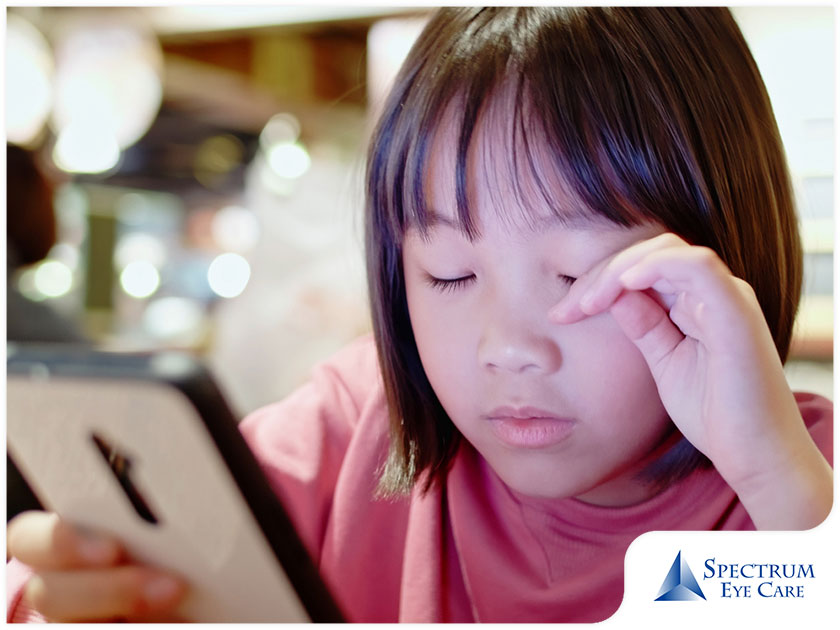Limiting your child’s screen time can encourage outdoor play, healthy sleep patterns, in-person social ties and, more importantly, eye health. With more of our life spent in front of screens for work, school, entertainment, fitness and social interaction, how can parents set limits and rules for their families?
In this article, an eye care professional explains the risks of too much screen time on children’s vision and what parents can do to help their kids use screens safely.
Eye Problems Caused by Excessive Screen Time
The following are some of the symptoms a child may experience as a result of excessive screen time:
-
Eye fatigue: Long periods spent concentrating on a screen might result in concentration problems and headaches around the temples and eyes. Squinting can cause weariness in children who use screen devices in low-light environments.
-
Blurry vision: The eye’s focusing system can spasm or “lock-up” if you stare at the same distance for a lengthy period of time. When a child glances away from the screen, he or she suffers from an accommodation spasm, which causes the child’s vision to blur. Children’s vision development may benefit from more time spent off screen and doing other fun activities.
-
Dry eyes: Studies reveal that people blink less when concentrating on a computer screen, leaving eyes dry and uncomfortable. Because they’re higher up in the visual field than a book, desktop and laptop computers can be hard on children’s eyes. In response, the upper eyelids open wider, increasing tear film evaporation.
Recommended Screen Time for Children
Screen time isn’t recommended for children who are up to a year old. However, limits can be applied if they are approaching two years. Make sure screen time is limited to only an hour or less until they are four years old. From five years old onwards, the screen time can be increased to two hours or less. Of course, adult supervision is advised. Watch with your kids as much as possible, and if they’re already nearing adolescence, see to it that they follow your guidelines on the type of media they consume and the number of hours they spend during their screen time.
Healthy Screen Time Habits
Help your kids to develop healthy screen time habits as they grow up around digital devices like mobile phones or laptops. Keep the following in mind:
-
Follow the 30-30-30 rule. Every 30 minutes, stare 30 feet away for 30 seconds. This keeps eyes moist and resets concentrating. Families can encourage this rule by setting timers or enabling software that turns down kids’ devices every 30 minutes. Encourage eye blinking – doing this exfoliates and cleans the eyelids, and prevents the eyes from drying out.
-
Encourage proper eye care. Not blinking enough might cause eyelid inflammation and irritation. At age 10, children should start scrubbing their eyelids during showers to eliminate biofilms and dead skin. Warm compresses help eyelid glands generate more tears.
-
Set up a safe place to watch. Adjusting screen brightness and keeping a healthy distance between it and your eyes help avoid retina damage and eye strain. Furniture can be arranged to provide distance from TVs and monitors. Families should avoid using digital devices in the dark.
-
Set up regular breaks from your digital devices. Limiting a child’s digital gadget use can be difficult. Parents and caregivers may establish “no screen zones”, such as the bedroom at night or during mealtime, for their children.
Ensure your kids’ eyesight by scheduling regular eye exams with Spectrum Eye Care. Call us at (704) 543-9000, or fill out our convenient online request form to schedule an appointment. We serve residents in and around Charlotte, NC.

